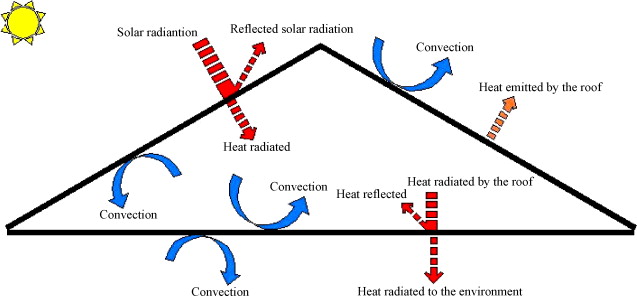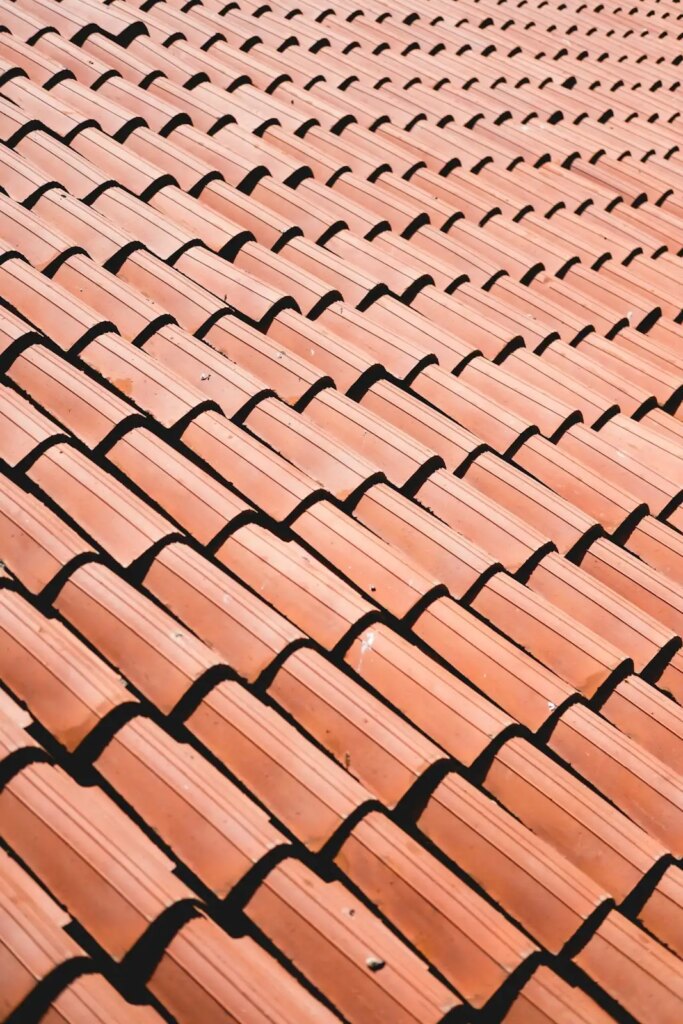Choosing the right roofing material is one of the most important decisions for any property owner. Your roof not only protects your home from the elements but also significantly influences its aesthetic appeal, energy efficiency, and long-term durability.
Among the most popular roofing materials are clay roof tiles and concrete roof tiles. Both options have their unique characteristics, advantages, and drawbacks, making the choice dependent on several factors like climate, budget, and architectural style.
In this guide, we’ll explore the main differences between clay and concrete roof tiles, examining their features, performance, and suitability for different projects to help you make an informed decision.
Clay vs Concrete Roof Tiles
Your roof is one of the most important elements of your property, providing both protection and aesthetic appeal. Choosing between clay and concrete roof tiles can be a tough decision, as each material has unique advantages and characteristics:
What Are Clay Roof Tiles?
Clay roof tiles are made from natural clay that is shaped and baked at high temperatures. This traditional roofing material has a rich history dating back thousands of years and remains a popular choice for its natural composition, timeless aesthetic, and exceptional durability.
Key Features of Clay Roof Tiles:
- Natural Composition: Made entirely from natural clay, these tiles are environmentally friendly and recyclable.
- Aesthetic Appeal: Clay tiles offer a classic, elegant appearance with rich, warm tones ranging from terracotta to earthy reds, making them ideal for Mediterranean and Spanish-style architecture.
- Durability: Known for their long-term durability, clay tiles can last over 100 years with proper maintenance.
- Energy Efficiency: Their ability to reflect sunlight makes clay tiles particularly suitable for warmer climates, helping to regulate indoor temperatures.
- Low Maintenance: Resistant to water damage, rot, mildew growth, and insect damage, clay tiles require minimal upkeep.
However, clay tiles are generally lighter than concrete tiles, which can reduce strain on the roof structure. Their weight, although lighter than concrete, still requires a robust roof frame, particularly for larger, machine-made clay tiles or more intricate designs.
Related Reading: How Long Does a Clay Tile Roof Last?
What Are Concrete Roof Tiles?
Concrete roof tiles are made from a mixture of sand, cement, and water, moulded under high pressure to create durable tiles. These tiles are a more modern roofing option, offering versatility and cost-effectiveness while still providing excellent performance.
Key Features of Concrete Roof Tiles:
- Versatility: Concrete tiles are available in a wide range of shapes, colours, and finishes, allowing them to mimic other roofing materials like natural slate or clay tiles.
- Durability: While not as long-lasting as clay tiles, concrete roof tiles tend to have a lifespan of 50-60 years.
- Energy Efficiency: Concrete tiles offer good thermal insulation, making them suitable for both warmer and colder climates.
- Affordability: Concrete tiles are generally more budget-friendly than clay, both in terms of material costs and installation.
- Low Maintenance: Resistant to fire, water absorption, and extreme weather, concrete tiles require little maintenance.
One drawback is their weight. Concrete roof tiles are significantly heavier than clay tiles, which can necessitate a reinforced roof structure. Additionally, they are more prone to mildew growth in humid climates due to their higher porosity compared to clay tiles.
Main Differences Between Clay and Concrete Roof Tiles
To make an informed choice between clay and concrete roof tiles, it’s essential to understand their main differences:
| Aspect | Clay Roof Tiles | Concrete Roof Tiles |
| Material | Natural clay | Sand, cement, and water |
| Weight | Generally lighter | Heavier, requiring a stronger roof structure |
| Lifespan | 100+ years | 50-60 years |
| Aesthetic Appeal | Warm, natural tones; classic look | Versatile; available in various colours and styles |
| Durability | Resistant to extreme weather and UV exposure | Durable but more prone to mildew growth |
| Cost | Higher upfront cost | More affordable |
| Maintenance | Minimal | Minimal, but may require cleaning in humid areas |
| Environmental Impact | Eco-friendly; recyclable | Less eco-friendly but can use recycled materials |
You Might Like: 5 Benefits of a Clay Tile Roof
Performance in Different Climates
- Warmer Climates: Clay tiles are ideal for warmer climates due to their reflective properties, which help keep homes cooler. Their ability to withstand high temperatures without degrading makes them a durable option in hot regions.

- Colder Climates: Concrete tiles offer better insulation for colder climates, helping to retain heat inside the building. However, clay tiles can also perform well if the roof structure accounts for frost resistance.
Energy Efficiency and Sustainability
Both clay and concrete roof tiles offer energy efficiency, but they achieve this in different ways:
- Clay Tiles: Their natural composition and reflective properties reduce heat absorption, making them ideal for energy-efficient roofing in hot climates.
- Concrete Tiles: These tiles’ density provides excellent thermal insulation, helping to maintain stable indoor temperatures year-round.
From a sustainability perspective, clay tiles’ natural origin and recyclability make them more environmentally friendly. However, concrete tiles can incorporate recycled materials, offering a greener alternative to traditional options.
You Might Like: What is a Green Roof?
Cost Considerations
The cost of roofing materials is a significant factor in decision-making. Clay tiles typically come with a higher upfront cost due to their production process and premium aesthetic. On the other hand, concrete tiles are more affordable, making them a popular choice for budget-conscious homeowners.
However, it’s important to consider the long-term costs. Clay tiles’ longevity and low maintenance may offset their initial expense over time, while concrete tiles might require earlier replacement or additional maintenance.
Aesthetic Appeal and Architectural Styles
The choice between clay and concrete roof tiles can also depend on the desired aesthetic and architectural style:
- Clay Tiles: Ideal for traditional and Mediterranean-style homes, clay tiles offer a timeless look with their warm, earthy tones.

- Concrete Tiles: With a wide variety of colours and finishes, concrete tiles can complement both modern and traditional architectural styles. Large format tiles are particularly popular for contemporary designs.
Closing Thoughts
Deciding between clay and concrete roof tiles ultimately depends on your project’s specific needs. If you’re looking for a timeless, eco-friendly option with exceptional durability, clay roof tiles are a great choice. However, if budget and versatility are your priorities, concrete roof tiles offer excellent performance at a more affordable price.
At C Kearney Roofing, we offer expert advice and top-quality roofing solutions and services, whether you prefer the classic appeal of traditional materials or the cutting-edge benefits of modern alternatives.
Contact us today to discuss your roofing needs and find the perfect slate solution for your home or business.
Clay vs Concrete Roof Tiles FAQs
What are the main differences between concrete and clay tiles?
Concrete roof tiles tend to be heavier, more affordable, and available in a wider range of styles. Clay tiles are lighter, more eco-friendly, and offer a timeless aesthetic with natural tones like terracotta. Both materials provide excellent roof covering options but differ in durability and cost.
Are clay roof tiles better for warmer climates?
Yes, clay tiles are ideal for warmer climates due to their reflective properties, which help regulate indoor temperatures. Their natural composition also makes them less prone to heat damage compared to other building materials.
Which tiles are more environmentally friendly, concrete or clay?
Clay roof tiles are generally more eco-friendly because they are made from natural, recyclable materials. Concrete tiles can also be sustainable when they incorporate recycled building materials, but their production process has a higher environmental impact.